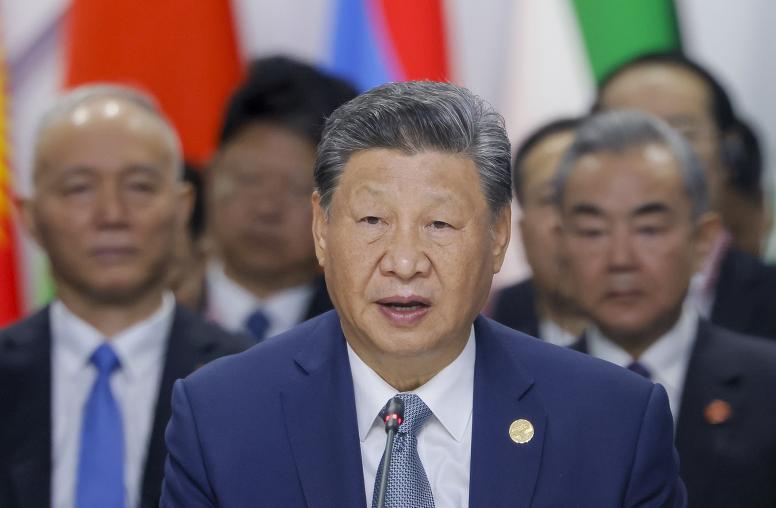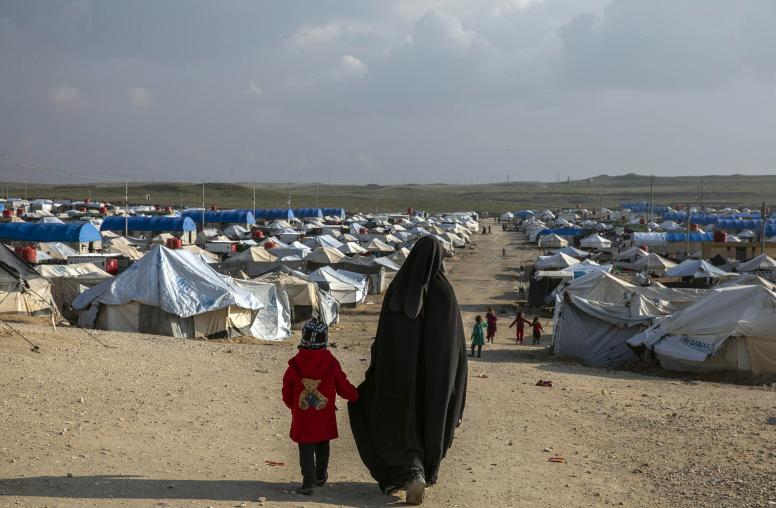Youth and Post-Conflict Reconstruction: Questions and Answers
1. What role do youth play in post-conflict reconstruction?
In conflict and post-conflict situations, some young people choose to fight or are forced into a life of violence. They are soldiers, bush wives, terrorists and gang members. Others are able to work to improve their communities, contribute to peacebuilding, reconciliation and reconstruction, and become invested in their countries’ future peace. They are grassroots community leaders, artists, young parliamentarians and students working toward positive social change.
This volume looks at whether policymakers and reconstruction practitioners can take action to break the cycle of violence, and—if so—what structures they can put in place so that youth can better contribute to their societies. It addresses these issues by using three cases of post-conflict reconstruction—Mozambique, the Democratic Republic of the Congo (DRC), and Kosovo—to explore how structural factors such as domestic policy, non-governmental organizations (NGO programming), international interventions, and cultural context affect and are affected by young people’s role in post-conflict situations.
Addressing youth needs during reconstruction is necessary, not only to stabilize the nation during the transition period, but to ensure future and sustainable peaceful development. As these young men and women become the next generation of adults leading the country, their experiences during reconstruction will influence the nation’s trajectory in the transition from war to peace.
2. How does this study contribute to our knowledge about youth and conflict?
Whereas previous studies had not drawn extensive comparisons across cases, this study traces common threads through the reconstruction periods in Mozambique, the DRC and Kosovo, showing that meeting certain critical needs, from physical and mental health to reintegration, education, and empowerment, is essential to a successful youth policy. This book provides a new framework for exploring linkages within and across cases, generating hypotheses and developing questions that will direct future research in the field. From this perspective, the study adds to the field not only through the observations drawn from the comparative analysis but also by pointing to questions that remain unanswered.
3. Defining “youth” as distinct from “child” and “adult” is a complicated task, yet essential if we are to get an accurate picture of issues specific to youth and to the role youth play in post-conflict resolution. What difficulties did you encounter in defining “youth”?
The difficulties in defining youth fall into three broad categories:
- Legal definitions of “child” and “adult” often conflict or overlap making pinpointing youth within legal and working definitions problematic. These definitions are also usually different from cultural definitions of “child,” “youth” and “adult.
- Conceptions of childhood and adulthood are altered by experiences in conflict. There is a tension created between the reality of children and youth assuming adult responsibilities in conflict situations, and the economic and socio-cultural restraints that deny them the power that adults wield in the greater political and social community.
- Different actors manipulate labels of “child”, “youth”, and “adult” to gain advantages in public opinion.
4. How does this study define youth?
To facilitate comparisons across the three case countries, this study focuses on individuals aged10-24. This definition is most useful because it covers the typically defined adolescent age group along with members of the younger population who, having lived through times of crisis, may in fact be filling youth or adult roles. Where possible, local understandings of “youth” are also taken into account.
5. What elements are necessary for a successful post-conflict reconstruction process?
While post-conflict reconstruction takes many different forms, a few key elements are generally acknowledged as critical to the process. As these case studies highlight, one of the first requirements of a successful reconstruction program is the DDR of former combatants. DDR refers to any program that encompasses three broad functions:
- Disarmament: the collection and disposal of weapons used by combatants.
- Demobilization: disbanding military structures to transform from a wartime to a peacetime environment.
- Reintegration: Facilitating long-term peace and the return of former combatants to civilian life.
6. In the book, you mention that DDR programs can significantly contribute to the stability of the post-conflict community, but ineffective programs can perpetuate instability. What factors must be present for DDR programs to successfully address youth needs?
The key factor here is that DDR programs address all three aspects: disarmament, demobilization, and especially reintegration. If a DDR program does not fulfill these tasks, many former combatants may have the means as well as the incentive to return to violence rather than try to enter civilian life.
The United Nations has identified guiding principles that, if followed, will lead to a successful youth DDR:
- Involve effective coordination between programs for children and adults to deal with former child soldiers who are now older than 18.
- Provide for long-term sustainability by fully reintegrating youth rather than separating them from their peers.
- “Do no harm” by planning a smooth transition and recognizing youth as an asset in the reconstruction process. This can be achieved by increasing employability of youth so that they are not trapped in poverty, ensuring heathcare and focusing resources on creating opportunities for further education and training.
7. What are the major theories relating youth and conflict in the existing literature?
The three main theories relevant to the relationship between youth and post-conflict reconstruction are the youth bulge theory, which emphasizes population structures, the greed-grievance model, which emphasizes decision-making structures, and the spoiler theory, which emphasizes power structures.
- Youth bulge theory examines the likelihood of conflict based on the logic that a large proportion of young men in the population will make a country more vulnerable to instability. Without economic opportunity and marginalized from politics, the logic of violence emerges as a rational—and, seemingly, the most effective—means for youth to make demands and engage the system.
- The greed-grievance model uses a cost-benefit analysis to understand what conditions make it easier for violent groups to recruit members. This thinking identifies several factors that can affect the opportunity-cost structure in ways that make joining rebel organizations a rational choice—i.e. access to food, education, camaraderie, and power.
- The spoiler theory acknowledges that certain actors may have incentives to disrupt the negotiation process depending on personality and structural conditions. Youth may be a potential demographic of “latent spoilers” who, given the means, would obstruct the conflict resolution process.
8. What are the main approaches to youth programming used today?
- Rights-based: The rights-based approach works almost exclusively with children under 18 years old and focuses mainly on preventive policy, viewing children as victims of a hostile situation that undermines their legal human rights. Programs using this framework tend to concentrate on reuniting children with their families, educating communities about protecting children’s rights, and providing immediate relief.
- Economic: An economic approach views youth as decisionmakers in the marketplace. This approach is centered around young people’s potential role either as an easily exploitable resource for conflict production, or as a resource for a productive peacetime economy. The corresponding programming is aimed at the short-term reintegration of youth into productive economic activity, often through vocational training, job placement or access to micro-business lending.
- Sociopolitical: A sociopolitical approach to youth programming views youth as vital members of civil society and understands the precarious long-term dynamic whereby youth can be active agents in their communities, both as potential spoilers and as peacebuilders. Sociopolitical empowerment programs may support youth civil society groups to do community service projects, or engage with their local government; establish and train an independent youth parliament; or use the arts media or journalism as a platform for youth to engage in community dialogue.
9. In this volume you state that the sociopolitical programming is the least common approach, and often the programming doesn’t match the needs in a particular conflict zone. How can post-conflict reconstruction actors best utilize these three approaches to bridge the gap between advocacy and empowerment?
In these case studies, there seemed to be a tension between the balance of children’s advocacy campaigns and sociopolitical empowerment programs for youth. Rights-based initiatives are necessary and are complimentary to other sociopolitical and economic empowerment programs. And yet, on their own they are limited by their own structure. For example, the goal for children’s rights protection tends to favor an adult-dominated process rather than youth participation. As a result rights-bases programming does not address the full spectrum of youth needs.
Where advocacy falls short, particularly in reaching adolescents and older youth, the successful programs described in all three of the case studies demonstrate that youth empowerment programming can be more effective than rights-based and advocacy programming alone. Also, the extent to which youth programming engages young people in the peacemaking process was a critical factor in overarching reconstruction program.
10. What are the key lessons to draw from the country studies?
- Youth are not simply a force for instability; they are also agents of peace. Their role, whether positive or negative, is shaped by the structures of the reconstruction process.
- Successful reconstruction involving the youth demographic does not require specific youth policy or an onslaught of youth-oriented NGOs. Rather, it depends on how effectively reconstruction actors fulfill certain critical functions, specifically protection, reintegration, and empowerment.
- To harness young people’s potential as peacebuilders, post-conflict actors must bridge the gap from advocacy to empowerment.
- The sequence of youth programming is key. Each critical youth function, from protection to reintegration and empowerment, builds on the success of the preceding function. While in reality the stages might overlap, each represents a critical progression: (1) Providing humanitarian aid; (2) Reintegration; and (3) Facilitating youth empowerment.



